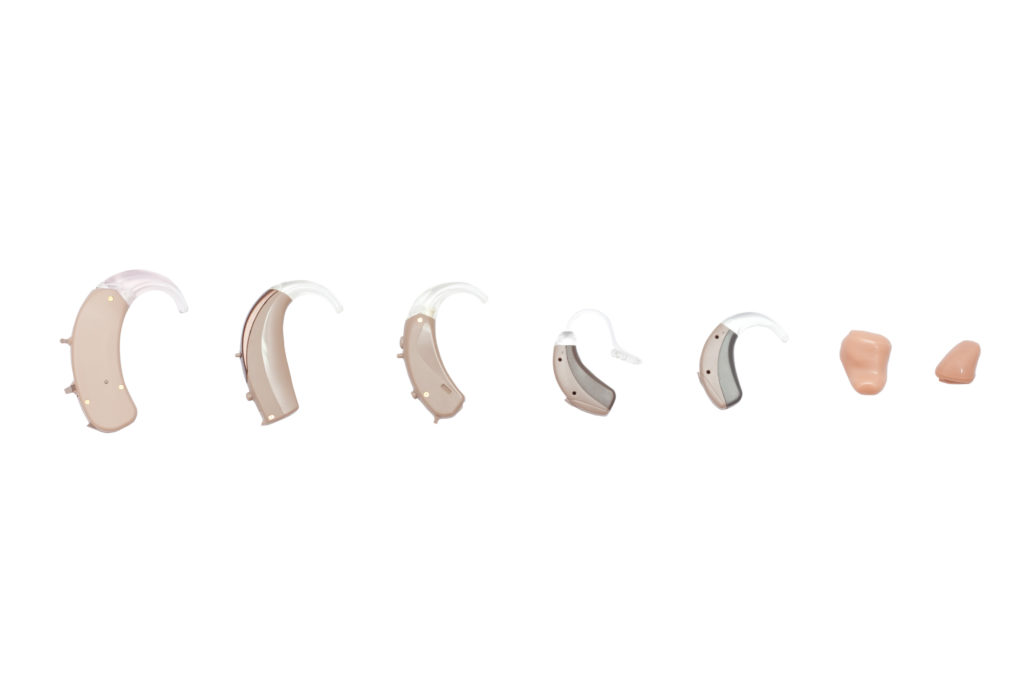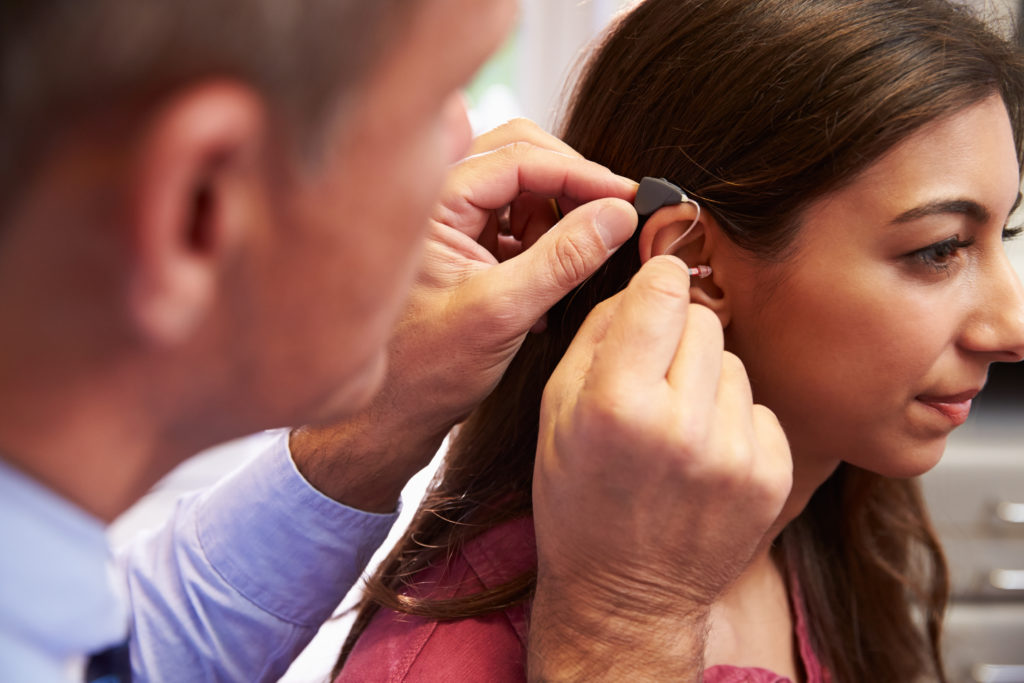A question we’re asked by our customers frequently is “How do hearing aids work?”. Sadly, there is no easy answer to this, as hearing aids are complex devices.
So, in today’s article, we will be exploring how hearing aids work; diving into each component, sound processing, hearing loss plus much more.
Components of hearing aids
Hearing aids are intricate devices designed to address various aspects of hearing loss. Understanding the key components is crucial to appreciating how these devices work. A hearing aid has five main components: microphone, amplifier, processor, receiver, and power source.
Microphone
The microphone is the entry point for sound into the hearing aid. It captures environmental sounds, including speech, music, and other auditory cues. Modern hearing aids often use directional microphones to focus on specific sounds, helping users hear what they want more clearly while minimising background noise.
Amplifier
Once the microphone captures sounds, the amplifier comes into play. Its primary function is to increase the strength or amplitude of the incoming signals. Amplification is customisable based on the individual’s hearing needs, with some frequencies potentially requiring more amplification than others.
Processor
The processor is the brain of the hearing aid, responsible for analysing and processing incoming sounds. Digital signal processing (DSP) technology is commonly used for this purpose. DSP allows for sophisticated adjustments, such as noise reduction, feedback cancellation, and the enhancement of specific frequencies.
Receiver
The receiver, or speaker, delivers the processed and amplified signals into the ear canal. It converts electrical signals back into audible sound that the wearer can hear. Receivers come in various styles, including in-the-ear (ITE) and behind-the-ear (BTE), and they may be adapted based on the user’s hearing loss configuration.
Power source
Hearing aids are powered by batteries that come in various sizes. The power source is essential for the continuous operation of the device. Some advanced hearing aids may have rechargeable batteries, offering convenience and environmental benefits.

Sound processing and amplification
The next subject to explore surrounding hearing aids is their sound processing and amplification. Be patient with us, it might get confusing…
Most modern hearing aids use digital signal processing, which involves converting analogue signals (sounds) into digital signals for precise manipulation. This allows for sophisticated adjustments to be made to the incoming sound in real-time. They often feature different programs or modes for various listening environments. These can include settings for quiet conversations, noisy gatherings, or listening to music, providing adaptability to different situations.
Furthermore, hearing aids are equipped with algorithms that can identify and reduce unwanted background noise. This feature helps enhance speech clarity by minimising distractions from environmental sounds. Its microphone focuses on sounds coming from a particular direction, reducing interference from surrounding noise.
Another key aspect of hearing aids’ sound processing is their compression and amplification. Its dynamic range compression ensures that both soft and loud sounds are audible and comfortable. It compresses the range of incoming sounds, making them more audible without causing discomfort due to excessively loud noises. Hearing aids can be programmed to amplify specific frequency ranges based on the individual’s hearing loss profile. This tailored amplification targets the frequencies where the user needs assistance the most.
Finally, hearing aids are capable of making real-time adjustments. Some have sensors that can automatically adjust settings based on the wearer’s movement or the surrounding environment. For example, when transitioning from a quiet room to a noisy street, the hearing aid may adapt to the change in sound conditions.
Types of hearing loss and matching solutions
Next, understanding the various types of hearing loss is crucial for tailoring effective solutions through hearing aids. Sensorineural hearing loss is the most common type of hearing loss, which results from damage to the inner ear (cochlea) or the auditory nerve. Hearing aids for sensorineural hearing loss typically involve amplifying sounds across different frequencies. Digital processing allows audiologists to adjust amplification levels for specific frequency ranges based on the individual’s audiogram.
Conductive hearing loss is another type of hearing loss where there is an issue with the ear canal, eardrum, or middle ear that prevents sound from reaching the inner ear. Due to this, the person suffering will need a hearing aid that amplifies sounds to compensate for the loss in transmission. In some cases, individuals may benefit from bone-conduction hearing aids or surgically implanted devices.
The penultimate type of hearing loss is mixed hearing loss. As you will deduct, mixed hearing loss is a combination of the previous two mentioned. Unlike the other two, this will require a combination of approaches, such as amplification for the sensorineural component and medical intervention or surgery for the conductive component. Hearing aids can be adjusted to meet the unique needs of mixed hearing loss.
The final type of hearing loss is high-frequency hearing loss. This type occurs when the sufferer is unable to hear high-pitched sounds, including consonants in speech. Hearing aids can be programmed to amplify specific high-frequency sounds, enhancing speech intelligibility. Additionally, directional microphones and noise-reduction features can be beneficial in challenging listening situations.

Fitting and adjustments
The fitting and adjustment process is a critical aspect of ensuring that hearing aids provide optimal performance for individuals with hearing loss. Numerous steps are involved when fitting hearing aids, and adjustments will be made.
Assessment
Firstly, before fitting hearing aids the individual will undergo a comprehensive hearing assessment conducted by an audiologist. This assessment includes audiometric tests to measure hearing thresholds and determine the type and degree of hearing loss.
Selecting the right hearing aid
Next, the audiologist will help you choose the right hearing aid, based on the audiogram results and individual preferences. Once decided, ensuring comfort is the next priority. The audiologist will ensure the hearing aid sits comfortably in or behind the ears, and that any custom earmolds or tips provide a secure fit without causing discomfort.
Real-Ear Measurement
Verification of amplification is the next step in the process. Real-ear measurement involves placing a tiny microphone in the ear canal to measure the actual sound reaching the eardrum with the hearing aid in place. This helps verify that the amplification settings match the individual’s prescription.
Setting parameters & fine-tuning
Based on your audiogram results, the audiologist will set parameters such as gain and frequency response. This is a starting point for programming the hearing aids correctly, however, more often than not further fine-tuning is needed further down the line. Next, the individual will provide feedback so the audiologist can make adjustments to address specific challenges or improve comfort.
The fitting process isn’t a one-time event, as some would think. Follow-up appointments are scheduled to monitor the wearer’s progress and make any necessary adjustments. This is particularly important as individuals may adapt to the new sounds gradually.
We hope you’ve enjoyed reading our latest article about how hearing aids work. If you have any questions surrounding the topic, feel free to get in touch with us today.
Alternatively, if you’re struggling with hearing loss recently or are currently wearing a hearing aid but your hearing health is still affecting your quality of life – we are here to help. Contact our team today to receive the help you need.




